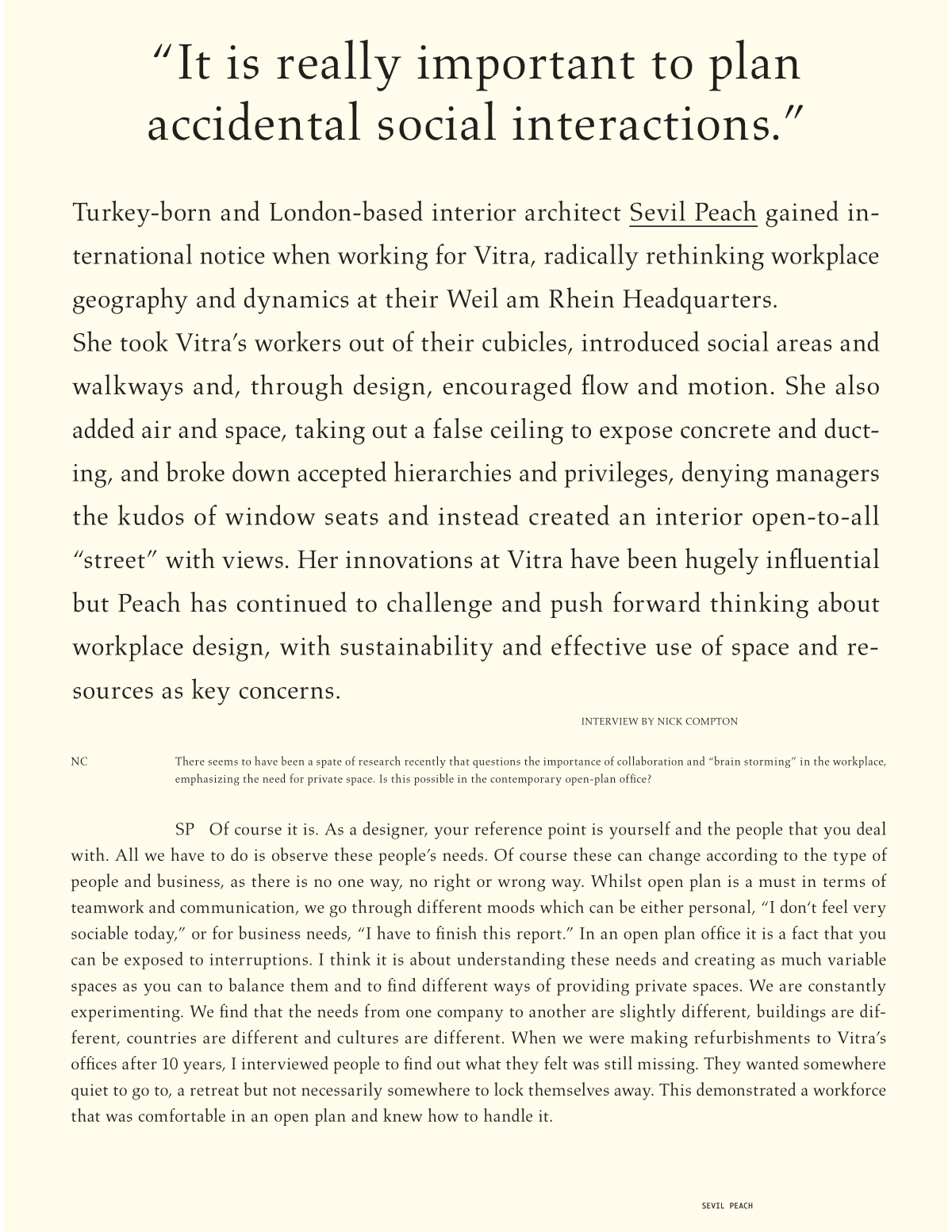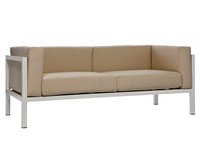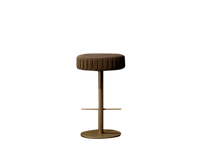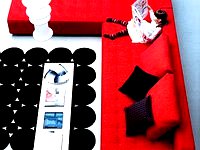SEVIL PEACH
SEVIL PEACH
“It is really important to plan
accidental social interactions.”
Turkey-born and London-based interior architect Sevil Peach gained in-
ternational notice when working for Vitra, radically rethinking workplace
geography and dynamics at their Weil am Rhein Headquarters.
She took Vitra’s workers out of their cubicles, introduced social areas and
walkways and, through design, encouraged fl ow and motion. She also
added air and space, taking out a false ceiling to expose concrete and duct-
ing, and broke down accepted hierarchies and privileges, denying managers
the kudos of window seats and instead created an interior open-to-all
“street” with views. Her innovations at Vitra have been hugely infl uential
but Peach has continued to challenge and push forward thinking about
workplace design, with sustainability and effective use of space and re-
sources as key concerns.
NC
There seems to have been a spate of research recently that questions the importance of collaboration and “brain storming” in the workplace,
emphasizing the need for private space. Is this possible in the contemporary open-plan offi ce?
SP Of course it is. As a designer, your reference point is yourself and the people that you deal
with. All we have to do is observe these people’s needs. Of course these can change according to the type of
people and business, as there is no one way, no right or wrong way. Whilst open plan is a must in terms of
teamwork and communication, we go through different moods which can be either personal, “I don‘t feel very
sociable today,” or for business needs, “I have to fi nish this report.” In an open plan offi ce it is a fact that you
can be exposed to interruptions. I think it is about understanding these needs and creating as much variable
spaces as you can to balance them and to fi nd different ways of providing private spaces. We are constantly
experimenting. We fi nd that the needs from one company to another are slightly different, buildings are dif-
ferent, countries are different and cultures are different. When we were making refurbishments to Vitra’s
offi ces after 10 years, I interviewed people to fi nd out what they felt was still missing. They wanted somewhere
quiet to go to, a retreat but not necessarily somewhere to lock themselves away. This demonstrated a workforce
that was comfortable in an open plan and knew how to handle it.
INTERVIEW BY NICK COMPTON







